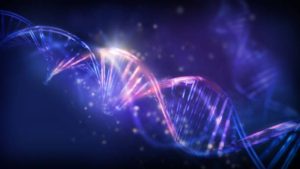
The discovery of the DNA double helix structure in 1953 is a landmark achievement in biology. This discovery, often attributed solely to James Watson and Francis Crick, was indeed a collaborative effort, but one tainted by a lack of recognition for a key player – Rosalind Franklin. Let’s delve deeper into the science, the people involved, and the ongoing debate about credit and scientific ethics.
The Players:
- Rosalind Franklin (1920-1958): A brilliant X-ray crystallographer, Franklin used X-ray diffraction to study the structure of DNA. Her meticulous work produced critical data, including the now-famous “Photograph 51” which revealed the helical nature of DNA.
- James Watson (born 1928): An ambitious young biologist, Watson teamed up with Crick to build a model of DNA structure.
- Francis Crick (born 1916): A skilled researcher, Crick collaborated with Watson on the DNA model-building project.
- Maurice Wilkins (1916-2010): A colleague of Franklin’s at King’s College London, Wilkins also studied DNA structure.
The Science:
DNA, or deoxyribonucleic acid, is the blueprint of life, containing the genetic instructions for all living things. Understanding its structure was crucial to unlocking the secrets of heredity.
Franklin’s X-ray diffraction images provided critical clues. These images captured the way X-rays scattered when they hit DNA molecules, revealing information about the molecule’s arrangement of atoms. Most importantly, Photograph 51 clearly showed a cross-shaped pattern, a strong indication of a helical structure.
The Controversy:
Watson and Crick, working at Cambridge University, were independently trying to build a model of DNA. While they did not have direct access to Franklin’s unpublished data, some believe they learned key details indirectly through Wilkins. Wilkins, reportedly frustrated with Franklin’s work style and eager for progress, might have shared crucial information, blurring the lines of scientific collaboration.
Watson’s book, “The Double Helix,” published in 1968, further fueled the controversy. The book portrays Franklin in a negative light and largely downplays her contribution. This narrative, coupled with the fact that Watson and Crick received the Nobel Prize in 1962 for their discovery (Franklin, tragically, died of cancer in 1958 and was ineligible), left a lasting stain on how history remembers this scientific achievement.
The Legacy:
Over time, the scientific community has come to recognize Franklin’s essential role. Her meticulous data and groundbreaking image were undeniably crucial to understanding the structure of DNA.
The Debate Continues:
Whether Watson and Crick deliberately cheated or simply failed to acknowledge Franklin’s contribution fully remains a matter of debate. However, there’s no denying that Franklin’s work was essential, and her story highlights the importance of recognizing all those who contribute to scientific progress, especially women whose contributions have often been overlooked.
Additional Points:
- Rosalind Franklin faced sexism in the male-dominated scientific world of the 1950s.
- The importance of collaboration and scientific communication is a key takeaway from this story.
- Recognizing unsung heroes and ensuring proper credit is essential for scientific integrity.
The discovery of the DNA double helix is a triumph of science, but its story is also a reminder of the importance of fairness and giving credit where credit is due.


